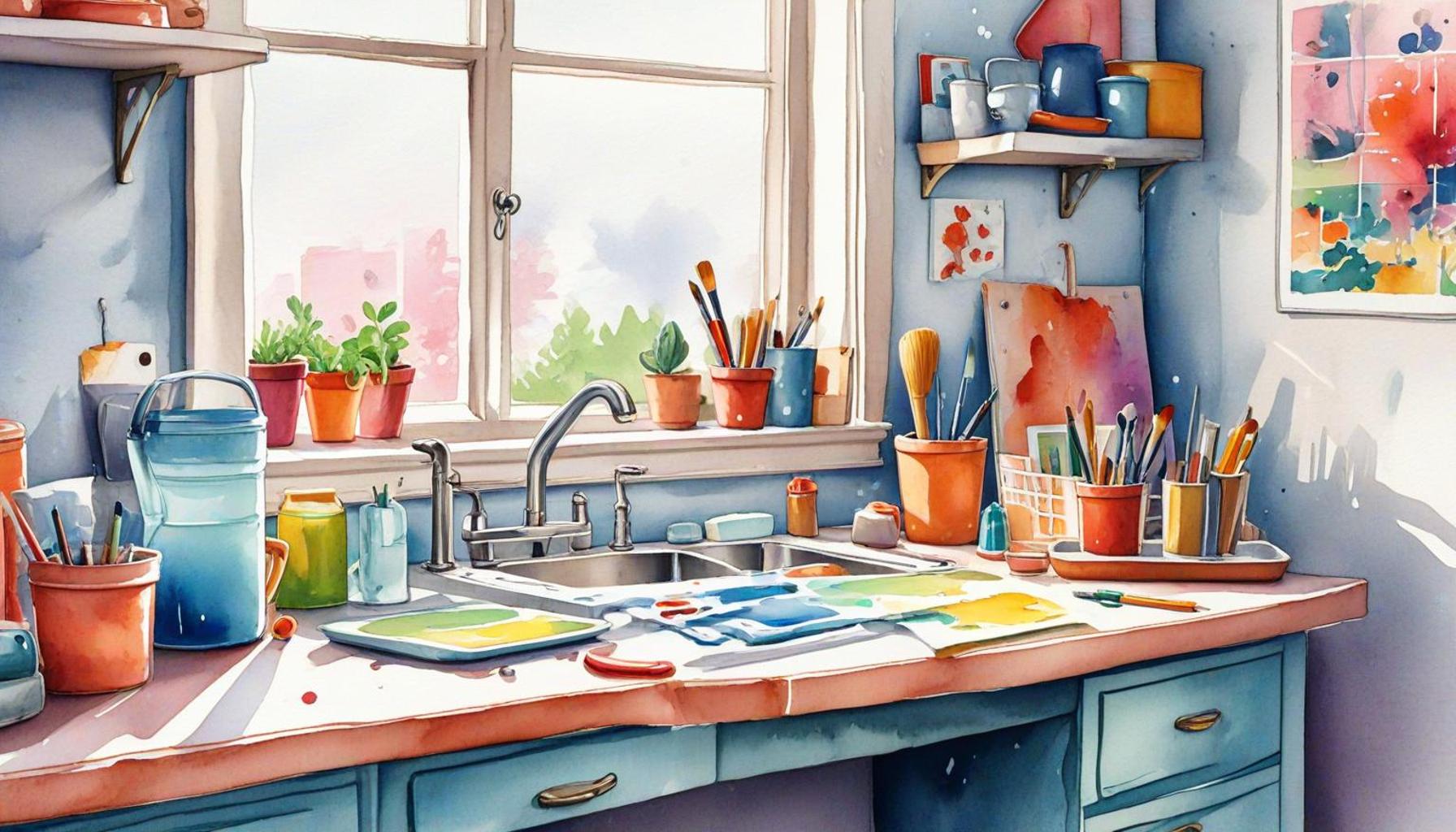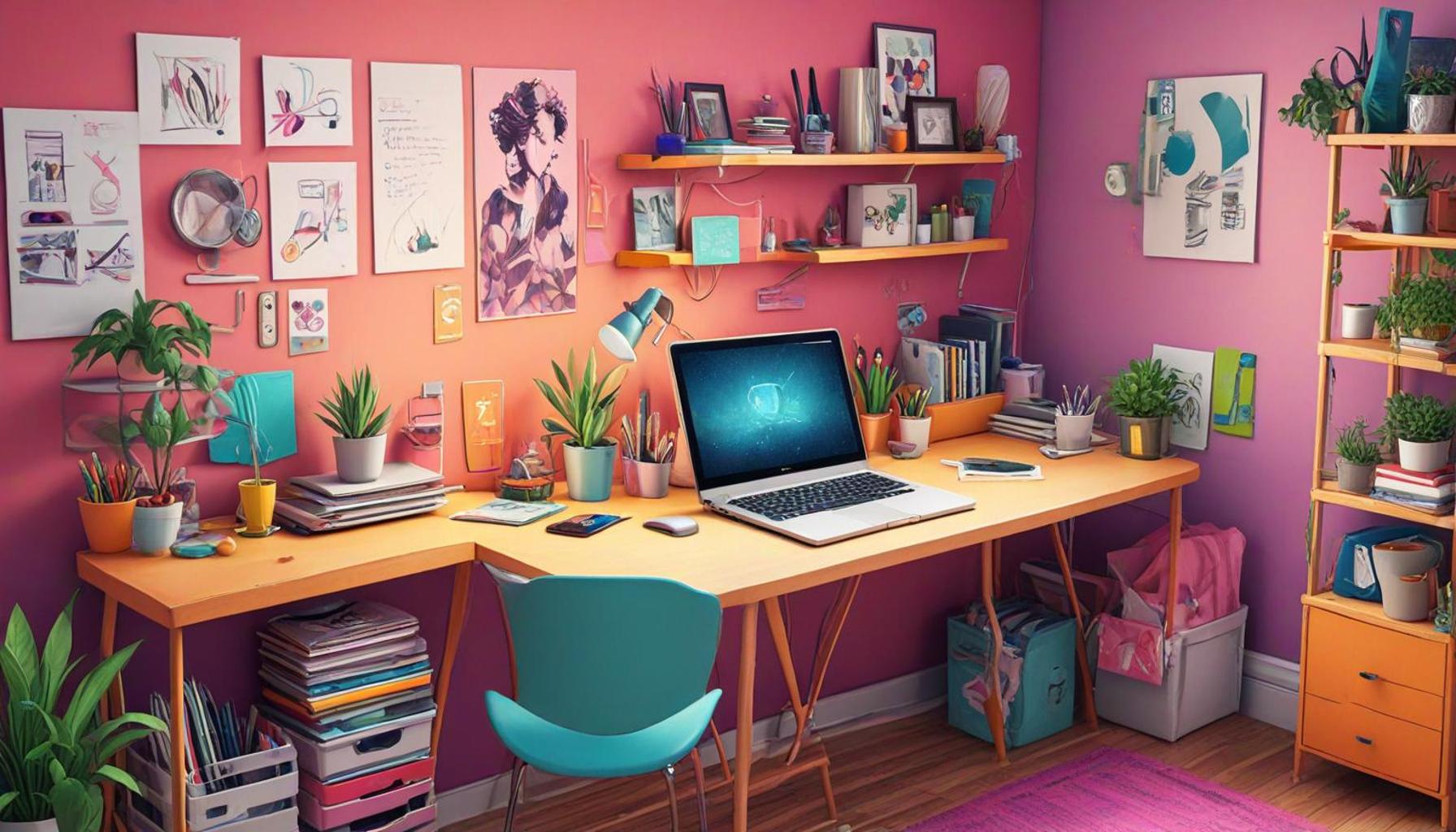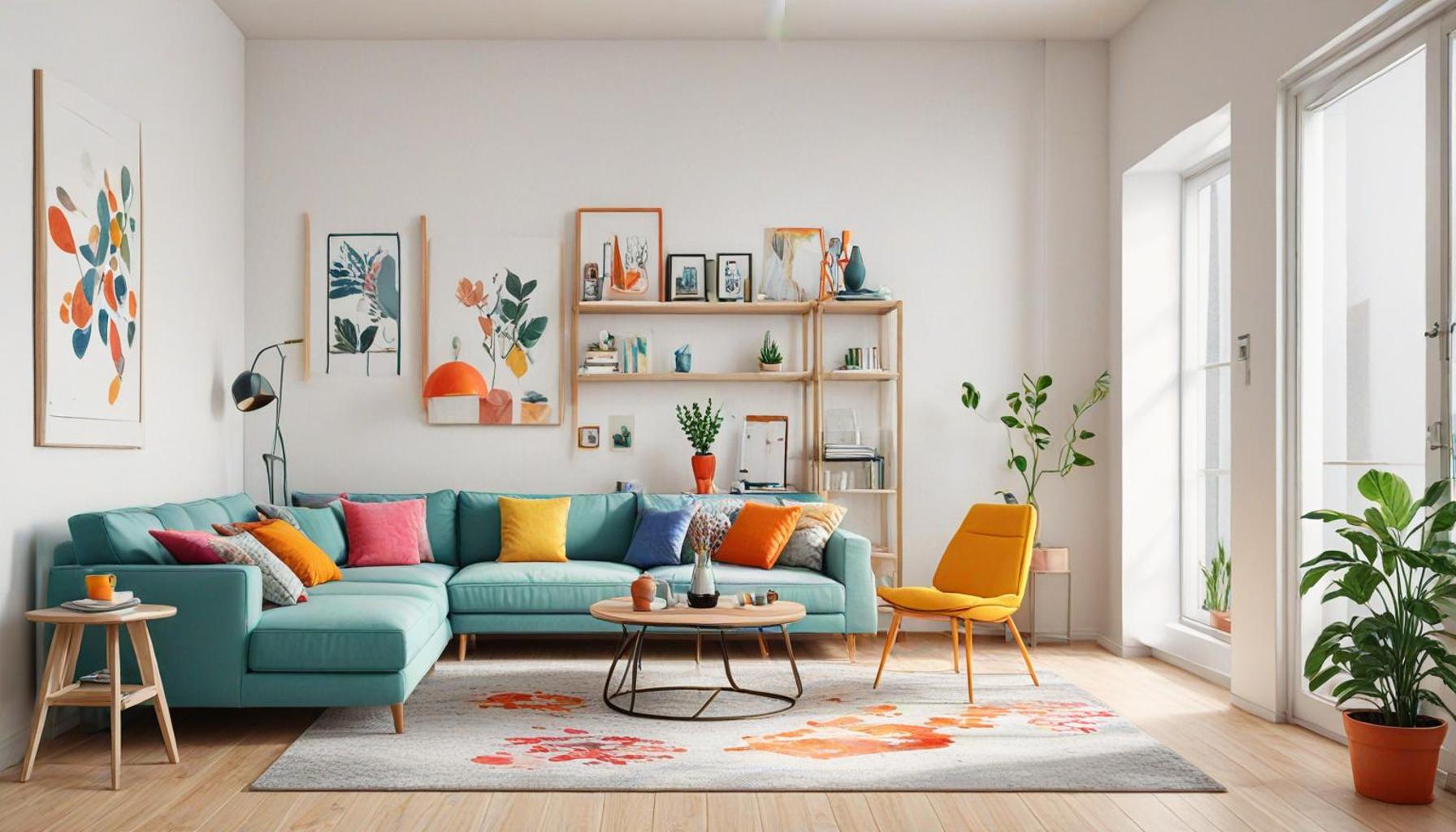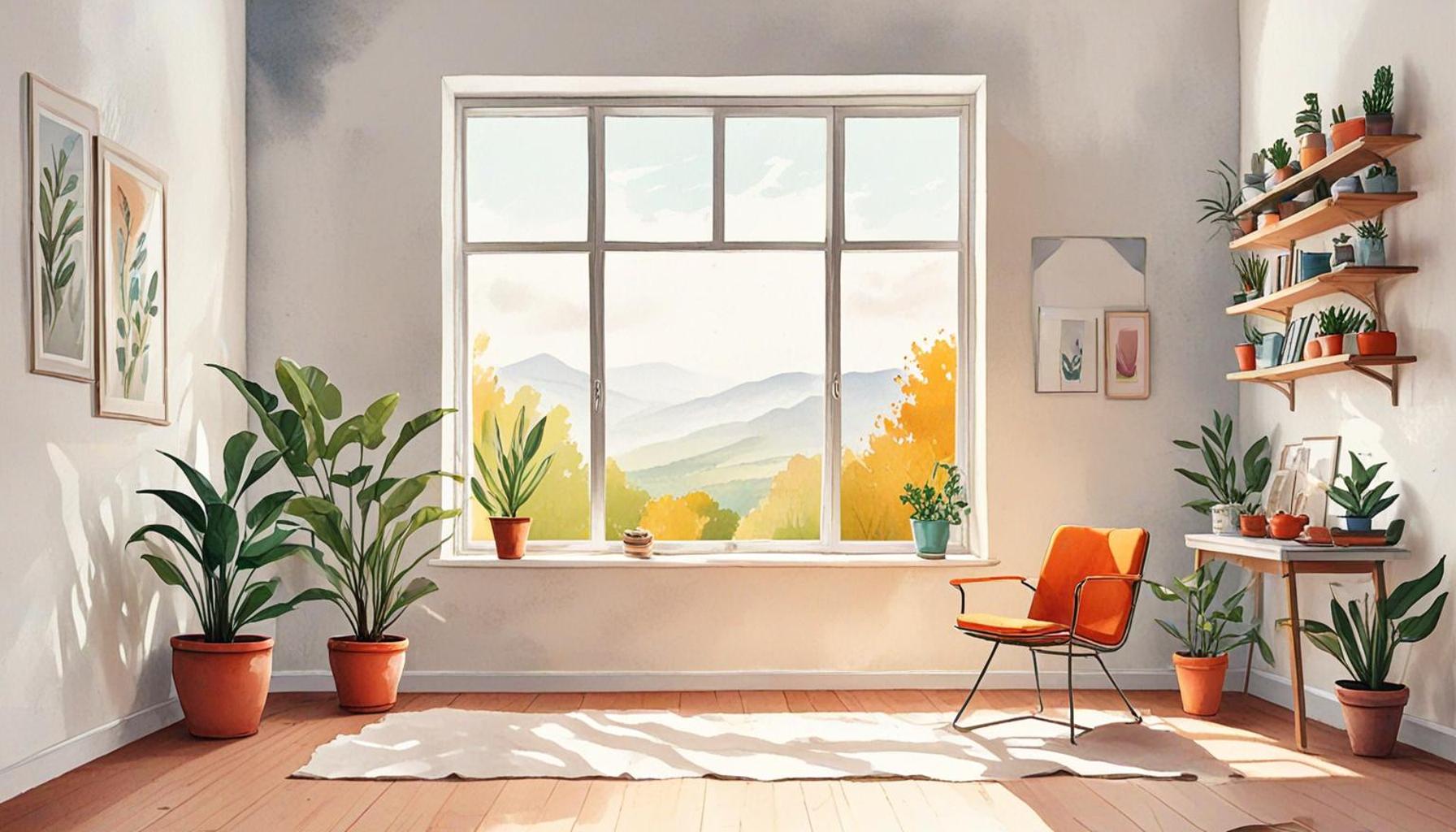The Importance of Keeping Surfaces Clear: Strategies to Minimize Clutter in Small Spaces

The Importance of a Clutter-Free Environment
In today’s fast-paced world, maintaining a clutter-free environment within small spaces is essential for both physical and mental well-being. Surfaces that are overwhelmed with items can create feelings of chaos and stress. The impact of clutter extends beyond mere aesthetics; it can significantly affect productivity, mood, and overall cleanliness in our daily lives. Understanding the far-reaching consequences of clutter can motivate individuals to take action.
Consider the profound effects clutter can have on day-to-day activities:
- Reduces productivity: Numerous studies have shown that a messy workspace hinders not only focus but also efficiency. When surrounded by disarray, finding essential items becomes daunting, leading to wasted time and increased frustration. For example, an employee working from home may struggle to locate important documents amidst a cluttered desk, ultimately diminishing their performance.
- Affects mood: Clutter can lead to feelings of overwhelm or anxiety, as the mind may subconsciously perceive disorganization as a loss of control. Individuals with cluttered living environments consistently report heightened stress levels, which can impact their overall quality of life. A serene, organized space, on the other hand, can foster relaxation and tranquility.
- Complicates cleaning: A plethora of items makes cleaning more time-consuming and complex. Dust accumulates more easily when surfaces are cluttered, and regularly cleaning becomes a daunting and often ignored task. This contributes to a cycle where clutter attracts more mess, leading to longer cleaning sessions, which can further discourage organization.
Understanding how to effectively minimize clutter can transform your living space into a haven of productivity and relaxation. Here are several practical approaches to achieve a clear and organized environment:
- Adopt a ‘one in, one out’ policy: This concept encourages individuals to think critically before acquiring new items by ensuring that any new addition results in the removal of something old. This method not only prevents accumulation but also encourages mindful purchasing and maximization of those possessions that truly add value to one’s life.
- Utilize vertical space: In smaller spaces, maximizing vertical space can dramatically increase functionality. Installing shelves, wall-mounted hooks, and overhead storage can free up valuable floor area while ensuring that essential items remain accessible. This is particularly beneficial in urban apartments where space might be limited.
- Create designated zones: Assigning specific areas for different tasks—such as a reading nook, home office, or crafting zone—can significantly reduce clutter. When each activity has an invitation area, accumulations of miscellaneous items decrease, contributing to a more organized environment.
By implementing these strategies, you can significantly enhance your home’s capacity for peace and productivity. The idea of living in an organized space is more than just a trend; it is a lifestyle choice that promotes well-being. Delving into these methods will unravel new insights on managing clutter, ensuring you can enjoy your small space to its fullest. Explore the resources available online and in your community that can offer additional support and inspiration in your journey towards a more organized living space.
DISCOVER MORE: Click here to learn about mindful consumption

Effective Strategies for Decluttering Your Space
When it comes to minimizing clutter in small spaces, the strategies you adopt can make a significant difference in both functionality and your peace of mind. Successfully maintaining clear surfaces is not just about aesthetics; it’s about creating a living and working environment that promotes productivity, happiness, and organization. Here are some effective strategies to help you achieve this goal:
- Implement Storage Solutions: One of the best ways to keep surfaces clear is through effective storage solutions. Consider using multi-functional furniture, such as ottomans with hidden compartments or coffee tables with built-in drawers. These items provide necessary functionality while allowing you to tuck away belongings that could otherwise clutter your space. Also, consider investing in decorative baskets and bins that can be stylishly displayed while serving as practical storage.
- Practice Daily Tidying: Developing a daily tidying routine can prevent clutter buildup from turning into an overwhelming task. Strive to spend a few minutes each day organizing surfaces, dealing with mail, and returning items to their designated spaces. This consistent, small-time investment creates a habit that becomes second nature, ensuring that clutter does not spiral out of control.
- Prioritize Essential Items: Before organizing, it’s important to identify which items are truly essential. The “Marie Kondo method,” popularized by tidying expert Marie Kondo, encourages individuals to evaluate belongings based on their ability to spark joy. By carefully curating your possessions, you can distinguish which items deserve space in your small environment, even if that means letting go of some sentimental items.
- Establish a Cleaning Schedule: Having a cleaning schedule can significantly enhance your ability to maintain a clutter-free environment. Breaking down tasks into manageable segments ensures you are not left scrambling on weekends to catch up. Whether it’s a daily quick clean or a more thorough weekly decluttering session, creating a routine can streamline your efforts and prevent surfaces from becoming overwhelmed.
- Utilize Clear Containers: Clear storage containers allow for easy visibility of items while preserving an organized look. These containers are ideal for small spaces, making it simple to locate specific items without having to sift through clutter. Labeling containers can further enhance organization, allowing everyone in the household to identify where items belong.
By implementing these practical strategies, homeowners and renters alike can begin to reap the benefits of a clutter-free space. It’s about not only creating an environment that’s visually appealing but also one that enhances your quality of life. Taking control of clutter with these strategies empowers individuals and transforms their small spaces into organized sanctuaries. As you incorporate these strategies, keep in mind that the journey towards clarity is an ongoing process, and every small step makes a significant impact.
When tackling the challenges associated with small spaces, understanding the significance of maintaining clear surfaces becomes paramount. Clutter not only impacts the aesthetics of a space but can also affect mental clarity and productivity. Hence, implementing effective strategies to minimize clutter is essential.One effective method is the “One In, One Out” rule. This strategy encourages individuals to remove one item for every new item they introduce into their homes. By adhering to this principle, one can manage the influx of belongings and ensure that spaces remain orderly.Another beneficial approach is the use of multi-functional furniture. Items such as ottomans with storage capabilities or beds with drawers provide practical solutions for reducing visible clutter while maximizing utility. These pieces not only serve their primary function but also help conceal items that can easily create disarray.Vertical storage solutions also play a crucial role in keeping surfaces clear. Utilizing walls for storage—through shelves or hooks—can effectively free up floor space and surfaces, enabling the creation of a more streamlined environment. This practice not only maintains cleanliness but also adds an element of style through decorative storage units.Regularly scheduled decluttering sessions are a vital component of sustaining a tidy environment. Setting aside a specific time each week or month can help individuals evaluate their belongings critically, making it easier to part with items that are no longer needed or serve no purpose.Incorporating these strategies fosters a sense of control and enhances the livability of small spaces, promoting not only a visually appealing environment but also a more peaceful and organized lifestyle. By adopting these practices, one can pave the way for a simplified existence, making every square inch work efficiently.
DISCOVER MORE: Click here for essential tips on enhancing efficiency
Additional Techniques for Cultivating a Clutter-Free Environment
Beyond implementing effective storage solutions and developing daily habits, there are several other techniques that can help in the quest for clear surfaces in small spaces. These strategies not only help in managing clutter but also foster a sense of calm and order, contributing to overall well-being.
- Designate a ‘Clutter Zone’: Create a specific area in your home for items that don’t have an immediate place or are rarely used. This ‘clutter zone’ acts as a temporary holding space, making it easier to keep primary surfaces clear. However, it’s crucial to regularly review this zone for items that belong elsewhere or can be discarded. Keeping this area organized can prevent it from becoming a secondary accumulation point.
- Embrace Minimalism: Minimalism is a lifestyle choice that encourages owning fewer possessions. By adopting a minimalist mindset, individuals are more likely to think critically about their belongings and how they impact their space. In small spaces, even minor adjustments, like removing a few decorative items or reducing the number of magazines on a table, can greatly enhance surface clarity. Seek inspiration from minimalist blogs or documentaries to cultivate this refreshing perspective.
- Incorporate Vertical Storage: In small spaces, floor space can quickly become limited. Utilizing vertical storage options, like wall-mounted shelves and hooks, can help free up horizontal surfaces. By moving items upwards, you create an illusion of spaciousness while keeping essentials easily accessible. For instance, hanging pots in a kitchen or using wall hooks for bags in an entryway can do wonders for surface clarity.
- Limit Decorative Items: While adding decorative touches to your home can personalize your space, too many objects can lead to clutter. A well-thought-out approach to decor involves selecting a few key pieces that contribute to a cohesive design. This selective process not only highlights your favorite items but also maintains clear surfaces that promote a soothing atmosphere. Try adhering to the “three or fewer” rule—limit decorative spots to three items to reduce the visual clutter.
- Share Responsibility: If you live with others, it is essential to involve them in the clutter management process. Create a shared system with clear expectations about keeping communal areas clutter-free. Consider assigning specific tasks or areas for each person to oversee. Working together not only fosters accountability but also cultivates a culture of respect for shared spaces and an appreciation for a tidy environment.
These additional techniques deliver a comprehensive approach to minimizing clutter, especially in small spaces. Maintaining clear surfaces is an ongoing effort that requires intention and collaboration. By integrating these practices into your daily routine, you benefit from more than just a tidy home; you cultivate a lifestyle that values simplicity and organization. This holistic approach can ultimately lead to personal satisfaction, making the investment in decluttering profoundly worthwhile.
DISCOVER MORE: Click here to learn about personal organization strategies
Conclusion
In conclusion, the journey toward maintaining clear surfaces in small spaces is not merely a quest for aesthetics; it is fundamentally about enhancing our quality of life. The strategies discussed—ranging from designating a ‘clutter zone’ to embracing minimalism—serve as practical tools that empower individuals to reclaim their spaces and minds. Adopting a clutter-free mindset and utilizing smart storage solutions not only prevents overwhelming chaos but also cultivates an environment conducive to productivity and relaxation.
Managing clutter in our living spaces can lead to significant improvements in mental clarity and overall well-being. It encourages intentionality around possessions and fosters a deeper appreciation for what we choose to keep. By limiting decorative items and involving housemates in shared responsibilities, we create a collective effort that can transform our homes into havens of calm.
As we navigate the unique challenges of small living areas, let us remember that every small adjustment counts. Incorporating techniques like vertical storage can free up much-needed surface space, while periodic evaluations of our belongings can ensure we maintain a clutter-free environment. This ongoing commitment to organization and simplicity can yield a profound sense of accomplishment and satisfaction, paving the way for a serene and inviting home atmosphere.
Ultimately, by prioritizing the importance of keeping surfaces clear, we can enhance not only our living spaces but also our daily experiences. Consider exploring further resources, such as organizational books or workshops, to deepen your understanding of decluttering strategies. The path to a clearer, more harmonious space is at your fingertips—embrace it!


